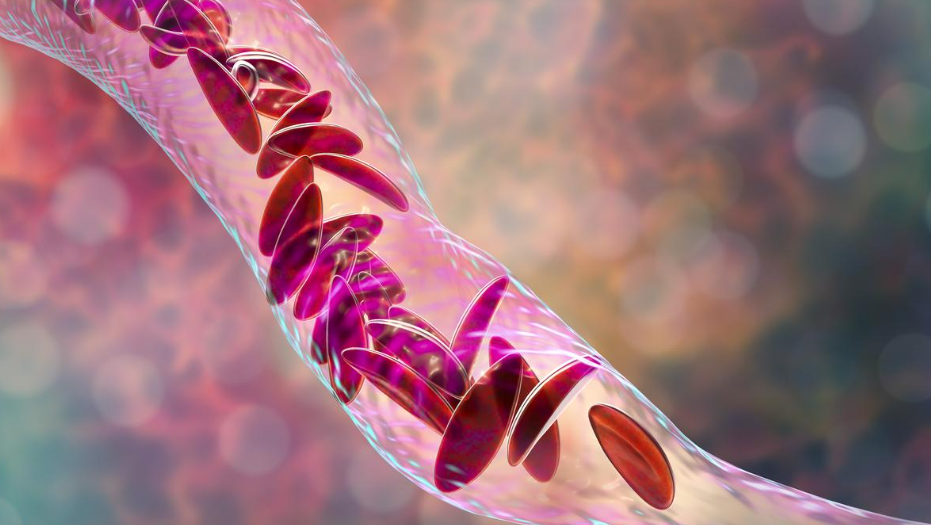India’s Sickle Cell Challenge (GS Paper 2, Health)

Context
- In 2023, Prime Minister Narendra Modi launched the National Sickle Cell Anaemia Elimination Mission, aiming to eradicate sickle cell disease (SCD) as a public health issue by 2047.
- This ambitious initiative seeks to address a major health challenge, particularly prevalent in India’s tribal regions, and tackle the associated health complications, social stigma, and barriers to healthcare access and treatment.
National Sickle Cell Anaemia Elimination Mission
- The mission's goal is to eliminate sickle cell disease by 2047, with a focus on tribal regions where the prevalence is highest.
- Key states affected include Odisha, Jharkhand, Chhattisgarh, Madhya Pradesh, and Maharashtra.
- The mission encompasses a broad strategy to reduce the disease burden through prevention, improved treatment, and public awareness.
Understanding Sickle Cell Anaemia
- Sickle cell anaemia is a genetic blood disorder caused by a mutation in the haemoglobin gene, leading to crescent-shaped red blood cells.
- These abnormally shaped cells cause blockages in blood flow, leading to pain, organ damage, and anemia.
- The disease is inherited when both parents carry the sickle cell trait. It is prevalent in individuals of Indian, African, Mediterranean, and Middle Eastern ancestry.
Challenges in India
Burden of Disease:
- India bears the second-highest burden of sickle cell disease globally, with over a million affected individuals.
- This large population poses a significant public health challenge.
Genetic Abnormality:
- Sickle cell disease arises from inheriting the sickle cell trait from both parents.
- Patients suffer from severe health complications due to their crescent-shaped red blood cells, which lead to painful episodes and increased risk of organ damage.
Social Stigma:
- Patients often face social stigma, including misconceptions that the disease is related to curses or black magic.
- This stigma affects their social integration and marriage prospects, exacerbating the challenges they face.
Treatment Access:
- Despite various government initiatives, only 18% of sickle cell patients receive consistent treatment.
- Many patients drop out of the healthcare process at different stages, including screening, diagnosis, and treatment adherence.
Challenges in Diagnosis and Treatment
Diagnostic Gaps:
- Many patients do not seek formal diagnosis due to stigma or reliance on traditional healers, who may misdiagnose the condition.
- In tribal communities, there is often a mistrust of the public health system, leading to lower diagnosis rates.
Treatment Adherence:
- No permanent cure exists for sickle cell disease.
- Adherence to treatments like hydroxyurea is poor due to inconsistent availability of medicine and the long distances patients must travel for care.
- Additionally, vaccinations to prevent complications are inadequately covered.
The Way Ahead
Addressing Stigma:
- Tackling stigma is crucial for improving healthcare access.
- Targeted media campaigns can help raise awareness and dispel myths about sickle cell disease, following successful models used for polio and HIV awareness.
Increasing Screening:
- Expanding newborn screening in endemic regions can facilitate early detection and intervention.
- Early diagnosis allows for better management and reduces the long-term impact of the disease.
Improving Treatment Access:
- Ensuring the availability of essential drugs like hydroxyurea and strengthening support for treatment adherence at local health centers are critical.
- Reducing the need for patients to travel long distances for care can improve treatment outcomes.
Vaccination Coverage:
- Expanding vaccination programs to reduce infection rates and improve the quality of life for sickle cell patients is vital.
- Ensuring comprehensive immunization coverage can prevent complications associated with the disease.
Tailored Healthcare in Tribal Areas:
- Enhancing healthcare services in tribal regions is essential.
- This includes increasing funding and improving operational capacity to address the unique challenges faced by these communities.
Research and Development:
- Increased research is needed to better understand sickle cell disease and develop new treatments.
- Philanthropic and civil society support can complement government efforts and drive innovation in managing the disease.
Conclusion
- The National Sickle Cell Anaemia Elimination Mission represents a significant step towards addressing India’s considerable sickle cell disease burden.
- By focusing on reducing stigma, improving early detection, ensuring consistent treatment, expanding vaccination coverage, and strengthening healthcare infrastructure in tribal areas, the Mission aims to make substantial progress in eliminating this debilitating disease by 2047.
- Effective implementation of these strategies will be crucial in achieving the mission's goals and improving the lives of those affected by sickle cell anaemia in India.


